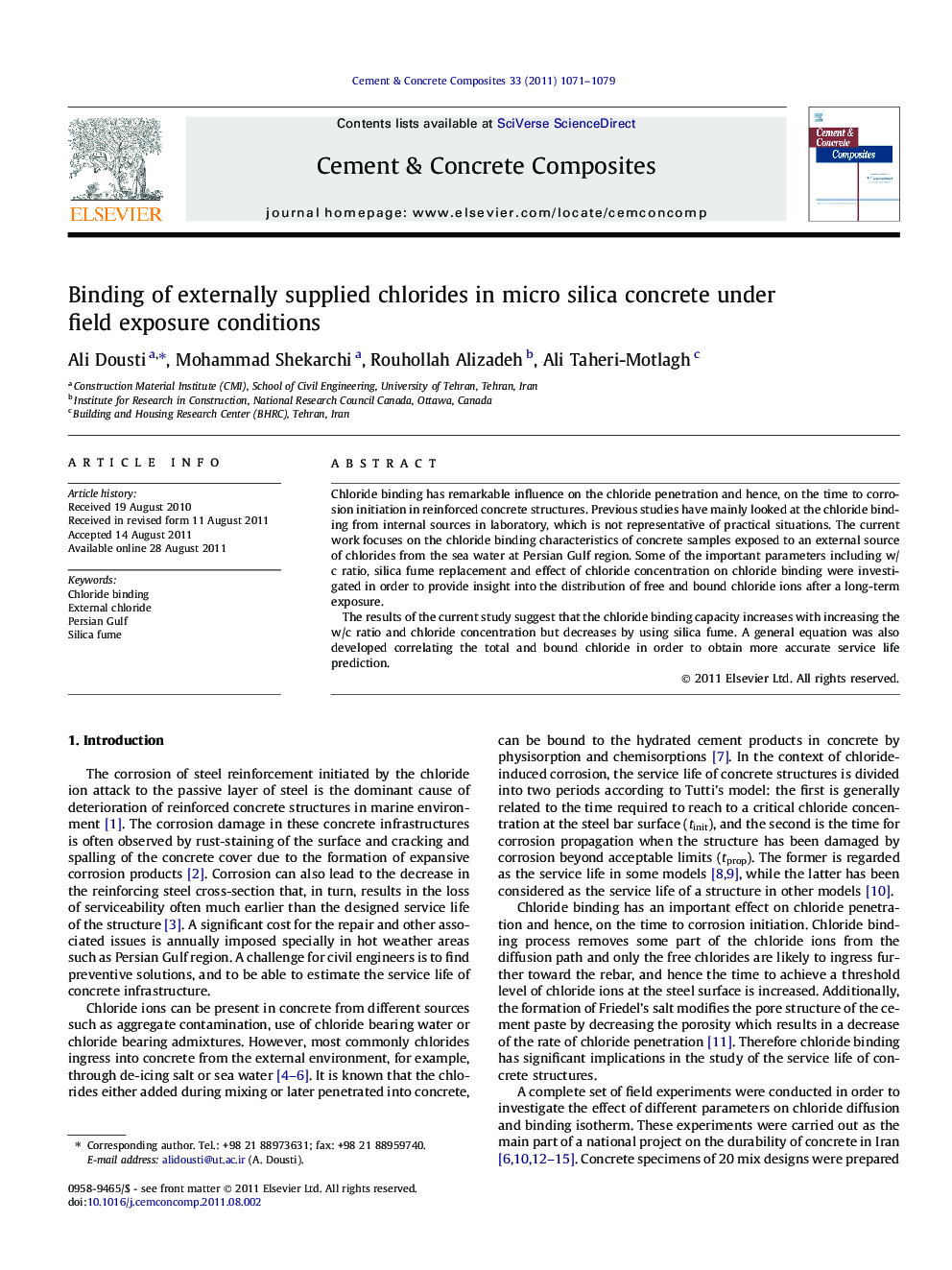| Article ID | Journal | Published Year | Pages | File Type |
|---|---|---|---|---|
| 1455288 | Cement and Concrete Composites | 2011 | 9 Pages |
Chloride binding has remarkable influence on the chloride penetration and hence, on the time to corrosion initiation in reinforced concrete structures. Previous studies have mainly looked at the chloride binding from internal sources in laboratory, which is not representative of practical situations. The current work focuses on the chloride binding characteristics of concrete samples exposed to an external source of chlorides from the sea water at Persian Gulf region. Some of the important parameters including w/c ratio, silica fume replacement and effect of chloride concentration on chloride binding were investigated in order to provide insight into the distribution of free and bound chloride ions after a long-term exposure.The results of the current study suggest that the chloride binding capacity increases with increasing the w/c ratio and chloride concentration but decreases by using silica fume. A general equation was also developed correlating the total and bound chloride in order to obtain more accurate service life prediction.
► By increasing the water/binder ratio the amount of bound chloride increases noticeably. ► Amount of bound chlorides increases when pore solution has higher chloride concentration. ► It is observed that by using silica fume the amount of bound chloride is markedly decreased. ► Amount of bound chlorides influenced by the chloride concentration and silica fume. ► By moving to inner layers of concrete, Cb/Ct ratio increased.
